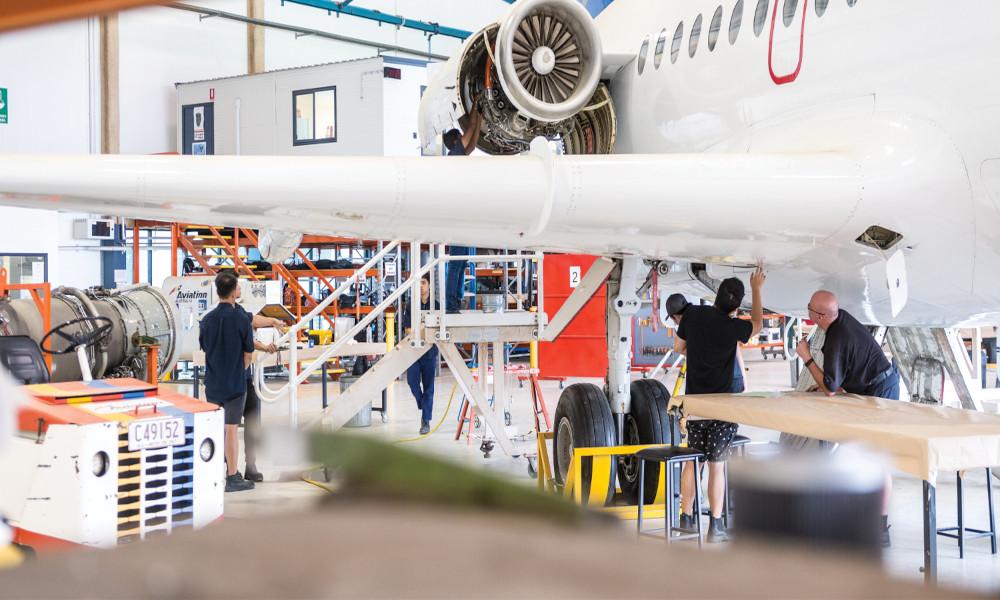
BRISBANE—The recovery of the Australasian region’s MRO industry is perceived as lagging behind other global locations, but stakeholders believe greater technology adoption could help bridge the gap.
Speaking on a panel about technology adoption at Aviation Week Network's MRO Australasia conference Nov. 14., Lloyd Armstrong, project manager at Queensland-based aircraft painting specialist Flying Colours Aviation, says Australia is only just reaching 2019 recovery levels and still lags behind other global regions in this sense.
“There’s a clear gap where technology can help us catch up,” he says. “While we lag behind, there's a good opportunity for us to look at the rest of the world, see what works and what doesn't work, and pick and choose what technology we can bring in to help us accelerate that.”
Flying Colours Aviation paints narrowbodies and helicopters, but Armstrong says the company is looking to add widebody painting capabilities to its portfolio soon, and it believes technology-driven efficiencies will be key to achieving this. Armstrong says the company has pinpointed several technologies that are commercialized, reliable and have a tangible impact on quality, efficiency, safety and sustainability, and he believes the strategy of sourcing these technologies will help the Australasian region plug industry gaps. “This starts with airlines, regulators and MROs,” he adds.
“The challenge of bringing innovation into a company or a sector is not unique, but there are so many challenges to working in the aviation sector and in the MRO space in particular,” says Reece Clothier, president of the Australian Association for Uncrewed Systems, a national body for emerging aviation industries such as drones and advanced air mobility that has around 4,000 industry members.
Clothier shares Armstrong’s view that Australia's aviation sector is still catching up post-pandemic, lagging in areas such as workforce and supply chain. “When you’re stuck in the trenches you don't have as much time, and even from the board level down there may not be the appetite to take on innovation when, arguably, this is the time you need it most,” he says. “You can't keep doing what you've been doing, because we're not going to catch up."
Clothier believes organizations must take a considered approach to how they adopt innovation and “how it's going to flow down, to answer the here and now and find the right bandwidth.” He adds: “This is a regulated industry, so we can only work within the confines of the regulations that we have today, but there are avenues within there to do something new and you can gauge the authority to explore that. But you have to make the time."
Ryan McMahon, national remotely piloted aircraft systems training manager at Aviation Australia, says aviation's highly regulated environment and its high stakes around safety, innovation and people can present a challenging business case for some companies.
“There may not always be a guaranteed return on investment to present to the board,” he says. “There are other pressing issues, particularly the lag time, and it's not guaranteed that you're going to be able to implement it.”
McMahon sees Australia's innovation mindset gradually shifting, due in part to the country's Civil Aviation Safety Authority. “We have an option to try and build these things independently and compete, or we can actually align some core objectives and create some standards,” he says.





